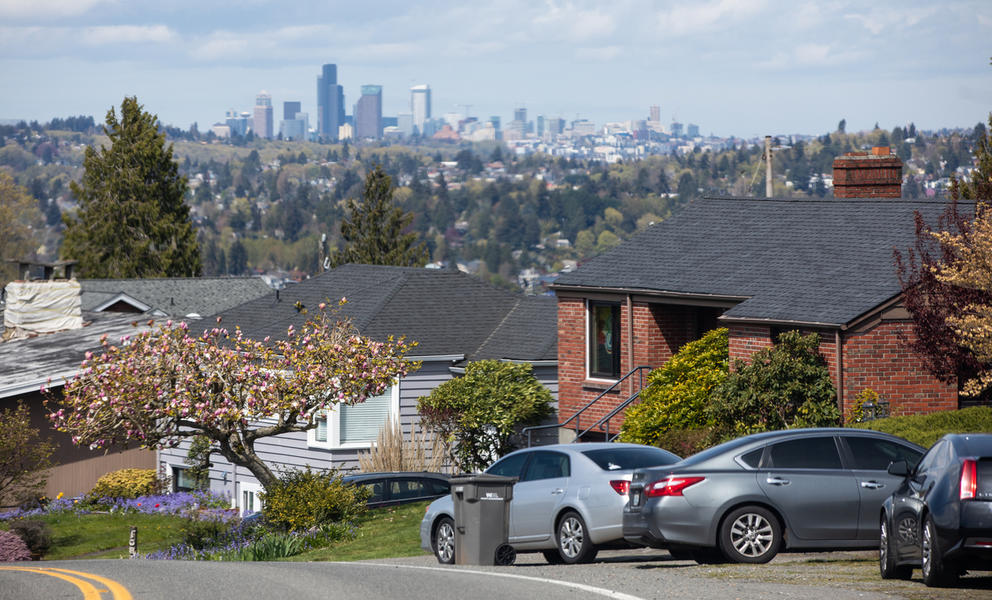All but one King County Council member voted in March for the Equitable Development Initiative, designed to curb the displacement of vulnerable communities. A letter signed by dozens of organizations backing the initiative indicated funds could go toward several key areas, including affordable housing, cultural facilities and space for small businesses. The ultimate goal is to counteract residential, cultural and commercial displacement. The initiative will rely on input from a planning workgroup made up of appointed community members, who will be compensated for their involvement.
A similar program in Seattle touts a lengthy list of projects, including the creation of a permanent birth center for people of color, as well as a mixed-use project with affordable housing, a health clinic and more for Indigenous people experiencing homelessness. In 2022, the initiative made funding available for projects, including up to $2 million for capital costs and up to $75,000 for capacity building.
“It was just very evident that we needed to broaden the Seattle EDI [Equitable Development Initiative] model to be countywide,” said Yordanos Teferi, executive director of the Multicultural Community Coalition which, along with dozens of other organizations, led the push for the program.
The initiative passed as several areas in King County 一 including Kent, Burien and Tukwila 一 face a high risk of displacement, according to a map from the Puget Sound Regional Council.
Displacement is also an issue for the county’s racially-diverse unincorporated areas, like North Highline and Skyway-West Hill, where median incomes are lower, but annual rents have increased at a faster rate than in the county overall. In the motion for the initiative, council members cited the loss since 2012 of 112,000 housing units that people earning 80% and below of the area median income could afford.
A home for rent in Bryn Mawr-Skyway neighborhood near Skyway Park on Thursday, April 21, 2022.
Displacement is an issue for the county’s racially-diverse unincorporated areas, like North Highline and Skyway-West Hill, where median incomes are lower but annual rents have increased at a faster rate than in the county overall. (Amanda Snyder/ Crosscut)
“I fear that we are becoming a county of, basically two counties of rich and poor,” said Rod Dembowski, the lead sponsor of the legislation.
Dembowski, who represents the First Council District in King County, including Kenmore, Lake Forest Park and Kirkland, was approached by community leaders about the issue. He does not expect the initiative to solve all of the county’s displacement issues.
“But I think it can be part of it,” he said.
Watching King County change
People around King County formed their communities in spite of 一 and maybe, in part, because of 一 displacement in Seattle.
“Kent is a very diverse place, it was not always that way,” said Crystal Fincher, a political consultant whose family moved to the city in 1988. “We were part of, wanna say, like 2½ Black families.”
Fincher recalled a nickname for her city that speaks to its evolution: The “Kentral District,” a moniker referring to the influx of people displaced from Seattle’s Central District, a historically Black neighborhood. Kent’s median gross rent from 2016 to 2020 was $1,495, compared with King County at $1,695 and Seattle at $1,702. The city’s population also includes a larger proportion of Black and Hispanic residents than King County overall.
Still, Fincher’s hometown has not been spared from gentrification.
Kent was among the top five spots in the county with the highest numbers of eviction filings during the pandemic, according to data from the King County Bar Association’s Housing Justice Project. In 2017, Adam Frank wrote on NPR.org that the evictions of residents and businesses may be “one of the best representations of how gentrification negatively affects a neighborhood.”
Other spots in the top five for pandemic eviction filings included Seattle, Auburn, Renton and unincorporated areas.
Beyond eviction filings, rents in Kent have jumped 15% since February 2021, according to a Kent Reporter story from March 2. Fincher said one of her neighbors endured a rent hike of at least 45%, with little time to adapt to it.
“That is catastrophic for a lot of people,” she said. “If they’re priced out of their current housing, there’s nowhere nearby that they can afford…. So many of my neighbors are people who were pushed out of other places, initially.”
The county council member from Fincher’s district considers the threat of displacement that communities face an ironic byproduct of investment into them.
“It is really a conundrum because we fight for resources in these low-income, diverse communities,” said Dave Upthegrove, who represents the Fifth District in south King County, which includes Kent, Renton and SeaTac. “We want better sidewalks. We want better lighting. We want light rail to come through.”
As these investments happen, he said these spots become more desirable to others. Upthegrove’s colleague pointed to the arrival of high-tech companies into the Seattle area as largely responsible for the soaring prices.
“The cost for home purchasing, the cost of rentals, leasing have just skyrocketed,” said Jeanne Kohl-Welles, who represents the council’s Fourth District and who co-sponsored the legislation. “People and communities have been displaced.”
A business space available near downtown Kent on Thursday, April 21, 2022.
Kent’s median gross rent from 2016 to 2020 was $1,495, compared to King County at $1,695 and Seattle at $1,702. The city’s population also includes a larger proportion of Black and Hispanic residents than King County overall. (Amanda Snyder/ Crosscut)
Looking beyond housing
While residential displacement has taken place, businesses have taken a hit, too. Fincher has noticed establishments owned by people of color and immigrants disappearing in her city and south King County overall.
“Not that they’re all gone,” she said, acknowledging that COVID-19 threatened the business community. “But in the recovery and looking at who’s coming back, it doesn’t look exactly like it was there before.”
Data from a November 2020 national poll of 500 small business owners found that 18% of Black and Latino respondents said they would likely close their businesses in the following months, compared with 14% of white respondents.
Councilmember Upthegrove thought specifically about how important affordable retail spaces can be for refugee and immigrant communities.
“If you can’t afford space to have a business and do business, that can have devastating economic impacts on specific cultural communities as well,” he said.
Cultural displacement is particularly heartbreaking, according to Upthegrove, who said community cohesion tends to form around central (and often faith-based) points. Families may be forced farther from cultural centers like temples and churches if they are unable to find housing they can afford, according to Upthegrove.
“I think you lose some cultural cohesion that people value,” he said. “You lose historic character.”
Unincorporated areas
The initiative is countywide, meaning spots without their own local governments will benefit.
The initial version of the motion called for the initiative to cover King County overall, but prioritize unincorporated areas. This language concerned Upthegrove.
“In my mind when you say you will prioritize one area, by default you’re deprioritizing the others,” said Upthegrove, who feared the initiative may leave south King County behind.
Community organizations like the Multicultural Community Coalition and Puget Sound Sage signed a letter urging council members to support the motion, specifically calling attention to unincorporated parts of the county.
“We want to build on the success of the Seattle EDI [Equitable Development Initiative] program and fund community-owned and driven development projects throughout the county, including in unincorporated areas that have been historically underinvested in by the county,” the groups wrote.
South King County encompasses many of the spots flagged as high risk for displacement, including Auburn, Burien, Tukwila, Renton and Kent. This region is also home to some of the county’s unincorporated areas.
In mid-February, King County Councilmember Girmay Zahilay, one of the sponsors of the legislation, said on Twitter that the initiative should focus on high-displacement-risk unincorporated areas like Skyway 一 an area he represents as the council member of the Second District.
He spoke to the concern around priority during a council meeting on Feb. 2.
“I completely hear Councilmember Upthegrove’s concern around making sure that there are cities and neighborhoods that are within incorporated areas that also have very high needs and have high displacement risk,” Zahilay said. “This motion should not exclude them.”
King County operates both as a regional government and as a local government to unincorporated areas, according to Councilmember Dembowski, who believes the county is obligated to step up for areas without city administrations in place.
The final version of the motion asked the planning workgroup “to make recommendations to the executive and council regarding how to prioritize the initiative's work in unincorporated area communities, particularly historically marginalized communities.”
Eight council members, including Upthegrove, voted to pass the motion. Reagan Dunn, who represents the council's Ninth District, voted against its passage.
Midtown 64 Apartments, a newer complex built in 2020 in Kent on Thursday, April 21, 2022. Rents in Kent have jumped 15% since February 2021 according to a Kent Reporter story from March 2.
All but one King County council member voted in March for an Equitable Development Initiative to curb the displacement of vulnerable communities. The initiative’s ultimate goal is to counteract residential, cultural and commercial displacement. (Amanda Snyder/ Crosscut)
What’s next
Some details remain up in the air for the initiative, including money.
“We still do not have a revenue source for King County EDI,” Teferi said. “Without a revenue source, essentially we will have a program that just doesn’t have funds. And so there’s still a lot of work to be done.”
Though the money to pay for the initiative remains unclear at the moment, Dembowski named a few ideas about where it could come from, including real estate excise taxes or block grants from the federal government.
The first phase for the initiative, which involves the creation of the program, is due to the King County Council at the end of August. The second phase includes a range of tasks: setting objectives, analyzing data, tracking outcomes and building partnerships. This will be due in 2023. Applications for the community planning workgroup are due on May 9.
In the coming years King County could see a number of projects develop, with the ultimate goal of keeping communities in place.









